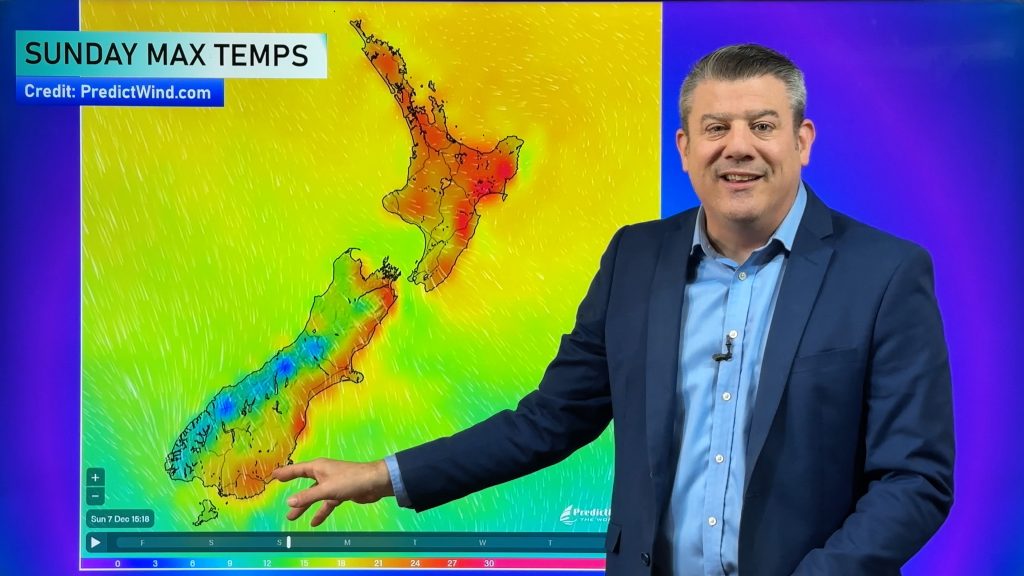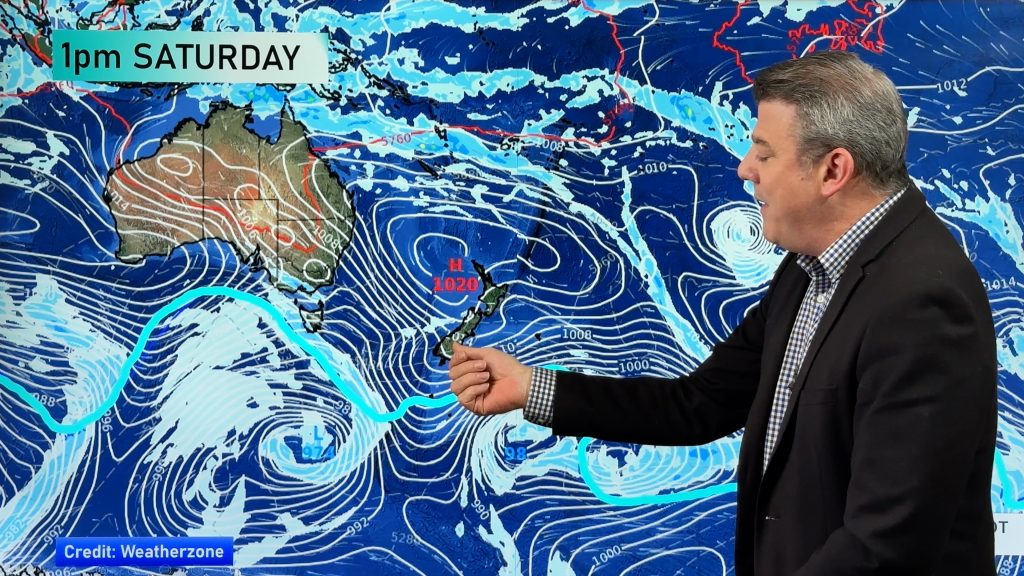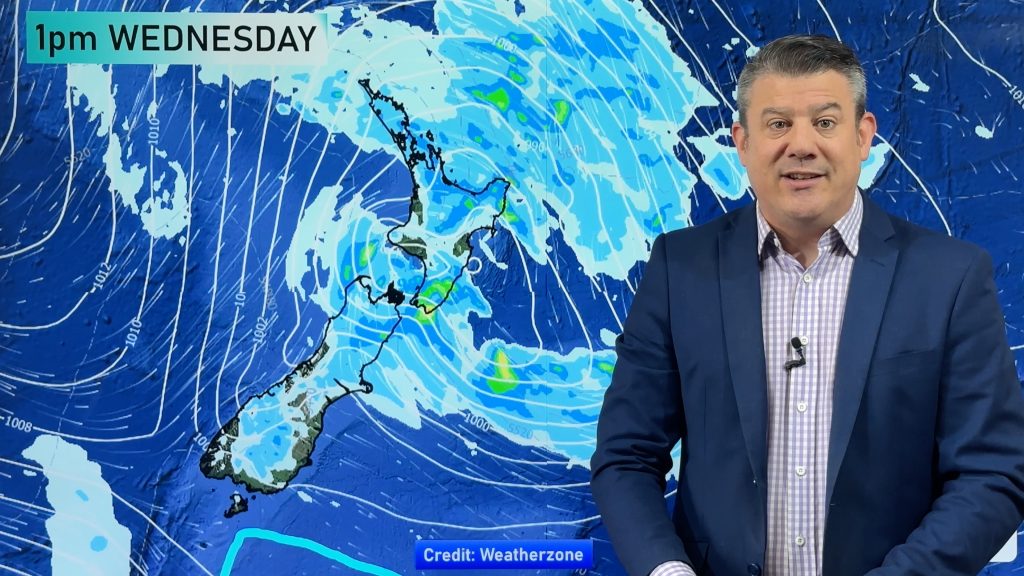It’s official: El Niño is finally underway (News + Special Video Update)
19/09/2023 7:27pm

> From the WeatherWatch archives
The Bureau of Meteorology (BoM) – the Australasian climate authority – says El Niño is officially here now.
They made the announcement a short time ago in a special update, made just a week after their last update (normally their ‘Climate Driver’ updates are fortnightly).
The update was made at 5pm New Zealand time, 3pm in Sydney, on Tuesday September 19.
EL NINO WEATHER HAS BEEN DEVELOPING PAST SEVERAL WEEKS
Over a year ago El Niño was first publicly discussed by forecasters in the media, saying it was likely to come in around winter or early spring in 2023. While it took longer than usual for the atmosphere to couple to the sea surface temperature changes, weather patterns in recent weeks have been much more El-Niño-like across New Zealand and Australia.
Australia has seen a large increase in high pressure, an early advance in hot days (nudging 40C already inland) and a reduction in wet weather in all the coastal fringes with exception of western Tasmania and very southern parts of Western Australia. It’s also been especially windy in Victoria and Tasmania and that’s boosted temperatures this week in Sydney to the mid to late 30s C.
In New Zealand we’ve seen an increase in the usual spring westerlies, spreading out from Australia – but El Niño tightens the screws on that wind, making it stronger than usual and warmer than usual. We saw that this week with the incredible hurricane force winds in the lower eastern North Island on Sunday night and warmer westerlies today and Wednesday nudging NZ’s eastern temperatures to the mid to high 20s C.
There’s also a drier pattern forming from Aussie to NZ. Incredibly those worst hit by floods in the east earlier this year are the first to feel the dry setting in now. Hawke’s Bay is seeing the drier pattern kick in and it’s already concerning some farmers and growers – so spring rain coming this weekend will be very welcome.
El Niño conditions are going to continue to set in and expand for the rest of 2023. This means summer and 2024 will kick off in the peak of El Niño. It may not be until later in Autumn or even Winter of 2024 before it fades. Understanding this may help clear up why forecasters have been talking about this developing for such a long time (a year now). It’s a very big driver of our weather conditions over the coming seasons and it’s like turning a large ship…it takes time. NZ is a very very tiny piece of the Pacific-wide El Niño puzzle.
OFFICIAL STATEMENTS FROM BOM – ISSUED 5PM NZST, 3PM AEST – NOV 19, 2023.
- An El Niño and a positive IOD are underway.
- The confirmation of an established El Niño increases the likelihood that the event will be sustained through the summer period.
- Oceanic indicators firmly exhibit an El Niño state. Central and eastern Pacific sea surface temperatures (SSTs) continue to exceed El Niño thresholds. Models indicate further warming of the central to eastern Pacific is likely.
- Broadscale pressure patterns over the tropical Pacific reflect El Niño, with the 90-day Southern Oscillation Index (SOI) at −7.7. Recent trade wind strength has been generally close to average, but was slightly weaker than average across the tropical Pacific in August 2023 for the first time since January 2020.
- Overall, there are signs that the atmosphere is responding to the pattern of SSTs in the tropical Pacific and coupling of the ocean and atmosphere has started to occur.
- This coupling is a characteristic of an El Niño event and is what strengthens and sustains an event for an extended period.
- Climate models indicate this El Niño is likely to persist until at least the end of February.
- BoM’s full statement is here.
SUMMER CONCERNS
El Niño and spring are similar in nature – ie, lots of windy westerlies. As we go into summer the spring westerlies usually fade away…and last summer we had a lot of easterlies and tropical airflows. But this summer may well see westerlies blowing off and on, helping scorch eastern and inland parts of NZ. More high pressure may also bring calm spells – but longer dry spells. More airflows are expected out of central desert parts of Australia where it’s super heated. If we get a nor’wester in mid-summer out of this part of Australia it could push temperatures in eastern parts of NZ over 40C under the right conditions.
GOVERNMENT FORECASTERS
Here in NZ commercial Government Agency NIWA – who don’t respond to climate questions WeatherWatch asks them – also said recently to NZ media they expect El Niño to be announced officially very soon. Both NZ and Australian Government climate forecasters (NIWA and BoM) have had similar messaging on El Niño all year, which is always encouraging for those trying to lock things in. It helps give the public more certainty to see various global Government climate forecasters on the same page. However NIWA’s recent commercial activity has prompted the NZ Government to recently announce yet another official review into NZ’s taxpayer forecasting double-up. We hope this review highlights how NIWA shouldn’t be controlling access to tax funded climate data and we hope the review suggests the NZ Government comes into line with other modern nations like Australia, Canada, UK, Japan and USA who fully embrace open data for public good.
LOOKING FOR SILVER LININGS
The El Niño weather pattern has already mostly formed so this announcement basically officially says the emerging drier, warmer/hotter pattern will become the new norm. But New Zealand’s location on earth – like Tasmania – means rain will still come into the West Coast, to Southland and likely there will be spillover into other parts of NZ from time to time, thanks to storms in the Southern Ocean and sometimes lows in the Tasman Sea between high pressure zones (like this coming weekend).
We’ll try to look for silver linings rain-wise, and we do have some coming in this week. On Wednesday our daily weather video will have a ‘mini-ClimateWatch’ update as we take a look at the latest upcoming rainfall for the rest of September, rest of spring and the start of summer.
It’s our job to be as honest as we can about what we see coming up, trying to find possible rain makers for those that need it most, but also sharing with you the chances of that rain not bringing relief. We’re here to help share the burden with you and connect people from region to region as some areas dry out in the months ahead and others still have rain or feed. Being honest can sometimes be confronting, but we hope our style means you can see likely patterns emerging and that can help you make decisions and find some certainty if your business or lifestyle relies on the daily weather.
Every El Niño is unique – but they do share similar traits. WeatherWatch.co.nz and RuralWeather.co.nz aim to bring you more detail in the coming weeks as this new pattern evolves and we can focus on the regions that start to dry out the fastest. To do this, we also rely on your feedback here and on our social media pages. Please help keep us up to date on conditions where you are – we read all the comments we get across our digital platforms and it helps us paint a picture beyond just the weather data on which areas are most exposed to a big dry kicking in. We also feed this back to mainstream media and for public-good Government agencies like MetService to help the public also better understand what is going on across the country.
Tune in on Wednesday to WeatherWatchTV for our next video update!


- WeatherWatch.co.nz / RuralWeather.co.nz
Comments
Before you add a new comment, take note this story was published on 19 Sep 2023.





Add new comment